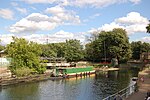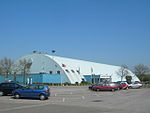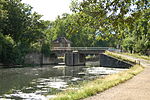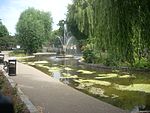Lea Bridge Road
Streets in the London Borough of HackneyStreets in the London Borough of Waltham ForestUse British English from June 2015

Lea Bridge Road is a major through route in east London, across the Lea Valley from Clapton to Whipps Cross in Leyton. It forms part of the A104 road. Places served on the road are the Lea Valley Park, Lea Bridge railway station and the Baker's Arms area. Formerly the Lea Bridge Stadium was located along Lea Bridge Road, and served as a home for Leyton Orient and later a speedway team. Almost opposite the stadium, Emmanuel Parish Church, built in 1935, is a Grade II listed building.
Excerpt from the Wikipedia article Lea Bridge Road (License: CC BY-SA 3.0, Authors, Images).Lea Bridge Road
Lea Bridge Road, London Clapton (London Borough of Hackney)
Geographical coordinates (GPS) Address Nearby Places Show on map
Geographical coordinates (GPS)
| Latitude | Longitude |
|---|---|
| N 51.56043 ° | E -0.04994 ° |
Address
Wattisfield Road
Lea Bridge Road
E5 9SQ London, Clapton (London Borough of Hackney)
England, United Kingdom
Open on Google Maps






